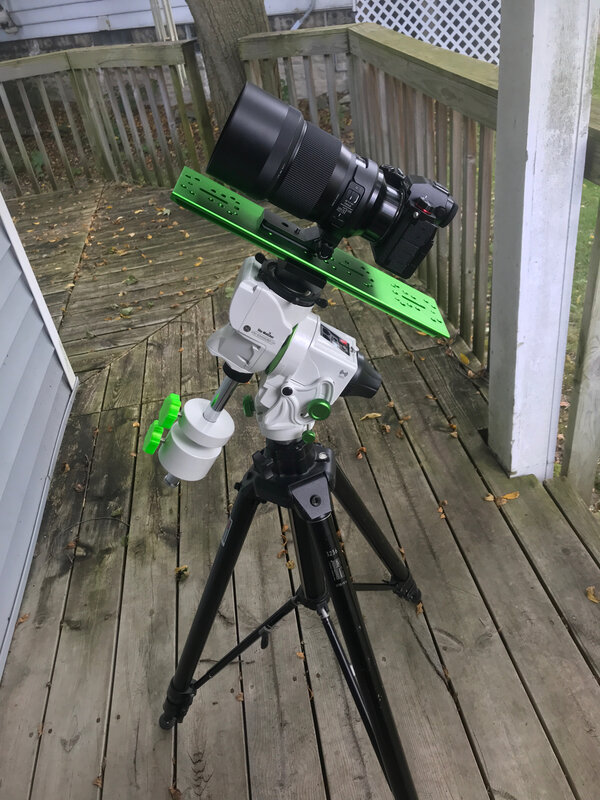That's pretty interesting. I've thought about using the 135 for astro. Good luck and please do post your results. Where do you shoot from?
I've been shooting astro with my S5 for about 4 years now. All have been "astroscape" however. Have used the Sigma 14-24 F2.8 Art, the new 20mm F1.4 Art, the older Sigma 28mm F1.4 (of the same vintage as your 135), as well as the Panasonic 50mm F1.8 and Sigma 65mm F2. All have returned great images. I use a tracker as well, which has been really helpful for all focal lengths, but obviously becomes more important as the focal length increases. Although I find that at wider focal lengths, a single F1.4 exposure produces remarkable images.
And yes, Live View Composite is awesome for star trails. Just set it and let it go. No advanced PP needed.
Have you considered modifying the sensor? One of my astro shooting buddies has a modded S5; it works quite well for him. I'll probably do it eventually.
Some tips:
- Be sure and set your shutter to Mechanical. All other shutter types have a bug that terminates a bulb exposure after a little over one minute. Used to drive me crazy until I figured it out.
- The AF system has a "low-light" feature that works quite well for astro. I normally set the camera to MF, then I use BBF and wait for the green indicator dot in the lower left of the screen to indicate focus lock. So much nicer than actually manually focusing. It normally locks in about 1-2 seconds.
- You can set the EVF and/or screen to "night mode" where everything is a shade of red, if you prefer.
- I normally shoot with Constant Preview set to ON. This is a little controversial, as it requires the preview to take exactly as long as the shutter speed, but it gives accurate previews. So, when composing an astro shot, I normally set the SS to 1 sec and the ISO to 512,000 when composing, and then I get a reasonable 1 Hz update speed in the viewfinder with enough brightness (if fuzzy) to allow me to judge the comp. Once the composition is good, I reset the SS & ISO to whatever I need for the image. Then just shoot away. Not sure if this makes sense for what you are shooting, but for astroscape it's quite useful, given that I normally try several different comps during a given outing.
Again, good luck. I really want to hear how the 135 works.

